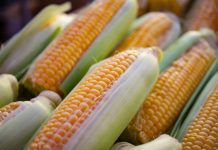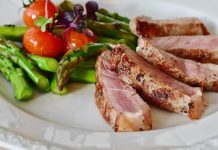In order to properly protect yourself and your family from food borne diseases there are certain preparation techniques which must be followed. According to the Center for Disease Control (CDC) approximately 5,000 Americans die each year from food borne diseases.
That is almost 14 people every single day of the year. The threat is real, and proper food safety when preparing food is vital. This is especially true when cooking with slow cookers or microwave ovens.
It is important to get the temperature of your food to the proper level in order to kill and eliminate all bacteria. The temperature required to kill bacteria such as salmonella vary from one food type to another.
The lowest acceptable temperature is 140 degrees Fahrenheit which is for pre-cooked ham. For steaks, roasts and chops the lowest temperature is 145 degrees Fahrenheit. Almost all other foods require a minimum temperature of 160 or 165 degrees Fahrenheit.
Table of Contents
Microwave Oven cooking Safety
Microwave ovens are fast, easy and when used properly are completely safe. As when cooking any item you should use a clean cooking thermometer to confirm the food has reached the proper temperature level. When cooking in a microwave you should allow for standing time after the cook cycle is completed. After this time is complete check the temperature of the food and serve immediately.
Tips and warnings for cooking with a Microwave;
- Arrange the food evenly in a dish with a cover or lid.
- Do not cook large cuts of meat on high in a microwave. Cook at 50% power to be certain there is time for the heat to reach the center of the meat.
- If only partially cooking an item in the microwave, you must continue cooking it immediately on the range or grill. Never store partially cooked food for later use.
- Stir the food approximately halfway through the cook cycle.
- Do not cook stuffed poultry in a microwave. The stuffing should be cooked separately, then inserted into the poultry.
- Use approved containers only. Melting plastic or wrapping can allow chemicals to enter your food.
- Never use newspaper, grocery bags, or brown paper bags in a microwave.
Slow Cooker Food Safety Tips
A slow cooker, or crock pot, is an easy and efficient way to prepare a food. The slow cooking method can help a less expensive piece of meat to come out tender and have less shrinkage during the cooking process. A slow cooker uses less electricity than a conventional oven and can cook an entire meal while you are at work or involved in other activities.
Tips and warnings for cooking with a slow cooker;
- If cooking a variety of items, keep the ingredients separate and refrigerated until you are ready to begin the cooking process.
- You should always thaw meat or poultry prior to cooking it in the slow cooker.
- Whenever possible, turn the cooker to the highest setting for the first hour, then reduce the power level. if this is not possible, the cooker on low all day is still safe.
- Keep the lid in place except when stirring or adding ingredients.
- Do not reheat leftovers in a slow cooker.
- Fill the slow cooker at least half full of food or liquid, but do not fill it over two-thirds full.
- If you are gone during the day and the electrical power goes out, you should throw out the food regardless of how it looks or its temperature.
- If the power goes out while you are home finish cooking the food by another method immediately. The food will remain good for a period of two hours.
- Do not refrigerate partially cooked food with the intent of finishing the cooking process later.



